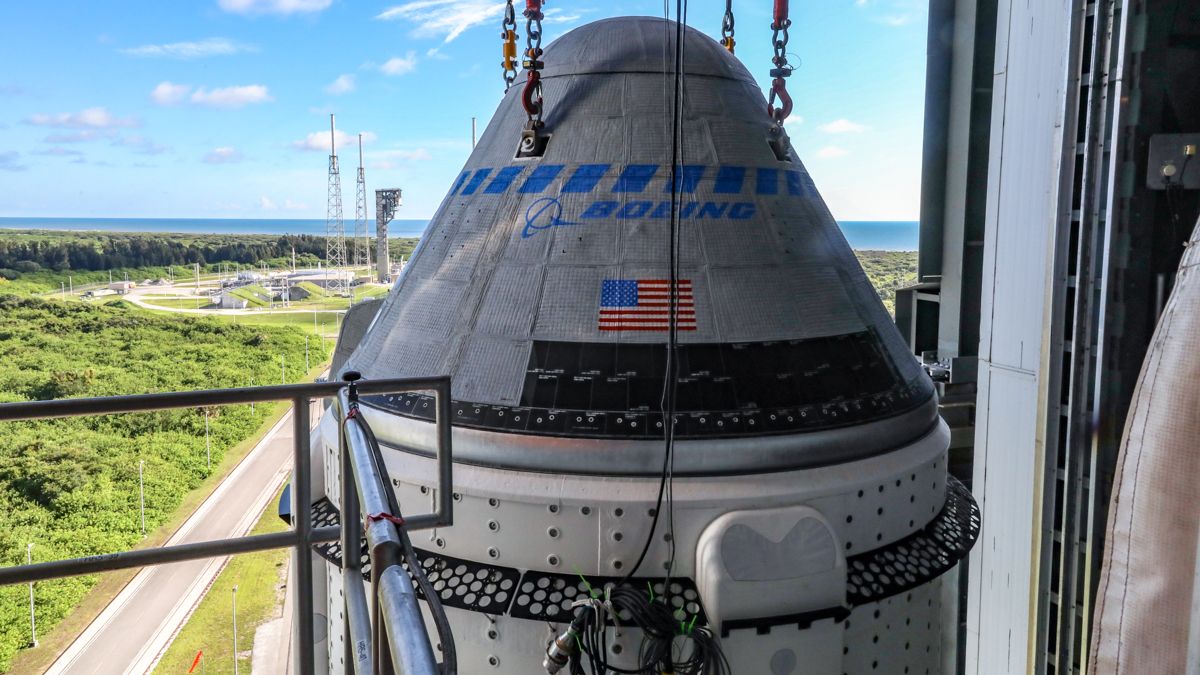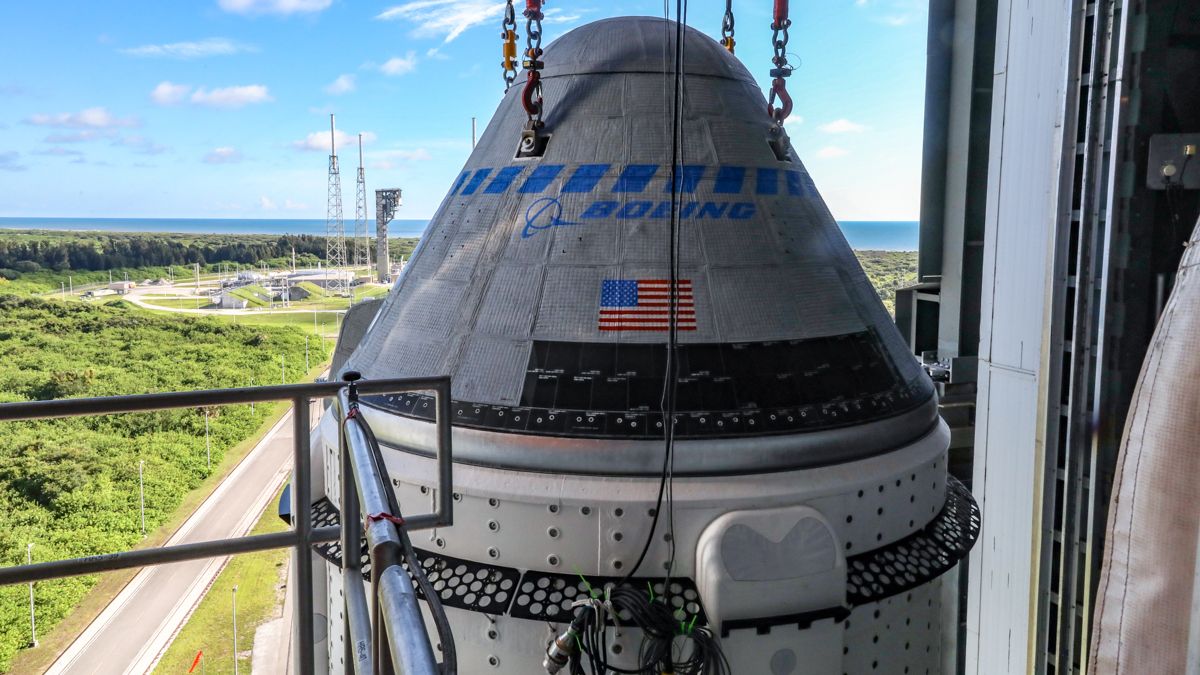
Boeing’s astronaut taxi is stepping into the limelight again, and the stakes are even higher this time.
The CST-100 Starliner capsule is scheduled to launch Friday (July 30) at 2:53 p.m. EDT (1853 GMT) on a crucial uncrewed demonstration mission to the International Space Station. You can watch it live here at Space.com, courtesy of NASA, or directly via the space agency.
The mission is called Orbital Flight Test 2 (OFT-2). As the name suggests, it will be Starliner’s second crack at an uncrewed meetup with the space station. On the first try, in December 2019, the spacecraft suffered a problem with its mission timer, got stranded in the wrong orbit and came home after circling Earth solo for two days.
It was not the first setback for Boeing or NASA’s Commercial Crew Program, which has been encouraging the development of private astronaut taxis for more than a decade.
Related: Boeing’s OFT-2 mission: Live updates
Photo tour: Inside Boeing’s CST-100 Starliner spaceship hangar
Filling the space shuttle’s shoes
NASA awarded its first commercial crew contracts in 2010. The goal was to get private American crewed vehicles up and running as soon as possible after the agency’s space shuttle fleet retired, which occurred the next year.
Boeing got one of those initial deals, as did SpaceX. The two companies were also among the awardees in 2011, and, in September 2014, NASA selected both of them to be official commercial crew providers. Boeing got $4.2 billion to finish developing Starliner and fly up to six contracted crewed missions to the space station, and SpaceX received a similar deal worth about $2.6 billion for its transportation system, which consists of the Crew Dragon capsule and Falcon 9 rocket.
When they announced those climactic awards, NASA officials said they hoped one or both private spacecraft would be operational by 2017. That was a hard target, especially considering that Congress has routinely allocated less money to commercial crew than NASA has requested over the years.
And both Boeing and SpaceX experienced some issues during development, which is hardly unexpected with brand-new spacecraft. For example, a Crew Dragon capsule aced its uncrewed test flight to the space station, known as Demo-1, in March 2019 but exploded on the test stand a month later during engine trials.
At one point, Boeing was targeting August 2018 for its version of Demo-1, called Orbital Flight Test (OFT). But a propellant leak was detected during tests of Starliner’s launch-abort engines in June 2018, pushing the capsule’s development back.
OFT didn’t get off the ground until Dec. 20, 2019, and things still did not go according to plan. The timing glitch wasn’t the only issue; post-flight analyses by Boeing and NASA revealed 80 “corrective actions” for the company to take.
“The review team’s recommendations included items relating to integrated testing and simulation, processes and operations, software, the crew module communication system and organization,” NASA officials wrote in an OFT-2 explainer this week.
Boeing has made all of those changes, as well as some others that weren’t mandatory, the officials added. So now, 19 months after the original OFT, Starliner is ready to fly again. (Not the same capsule, though; OFT-2 will use a different spacecraft.)
Starliner will carry 400 lbs. (181 kilograms) of cargo, as well as a test dummy named Rosie the Rocketeer, to the space station on OFT-2 and return to Earth with 550 lbs. (250 kg) of supplies, NASA officials have said. That touchdown is scheduled to take place in the western United States on Aug. 5.
Related: Boeing’s 1st Starliner flight test in photos
Keeping up with SpaceX
SpaceX has gotten out of the commercial crew gate faster than Boeing. Crew Dragon is now fully operational; the capsule aced a crewed test flight to the space station last summer and is in the middle of its second contracted mission to the orbiting lab for NASA.
OFT-2 is designed to show that Starliner, too, is ready to carry astronauts, a milestone that Boeing could achieve later this year if all goes well.
“As long as Starliner’s second uncrewed mission meets all necessary objectives, NASA and Boeing will look for opportunities toward the end of this year to fly Starliner’s first crewed mission to the space station, the Crew Flight Test (CFT), with NASA astronauts Barry ‘Butch’ Wilmore, Nicole Mann and Mike Fincke on board,” NASA officials wrote in the explainer.
Serious problems on OFT-2, however, would cause yet more delays, pushing further into the future the crewed-spaceflight redundancy that NASA prizes. (Agency officials have repeatedly stressed that they want more than one operational astronaut taxi, to maintain orbital access in case issues crop up with one craft.)
Such a scenario could even impel NASA to secure additional seats on Russian Soyuz spacecraft, something it did earlier this year as a sort of hedge against possible commercial crew delays. So, for both Boeing and NASA, there’s a lot more riding on Starliner this week than 400 lbs. of cargo.
Mike Wall is the author of “Out There” (Grand Central Publishing, 2018; illustrated by Karl Tate), a book about the search for alien life. Follow him on Twitter @michaeldwall. Follow us on Twitter @Spacedotcom or Facebook.



